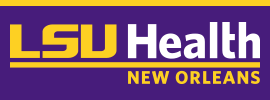Event Website
https://publichealth.lsuhsc.edu/honorsday/2021/
Start Date
1-4-2024 9:00 AM
Description
Background: High-utilizers of emergency room services represent a failure of the healthcare system to adequately address the health and social needs of certain populations. The Behavioral Health Emergency Room (BHER) at UMC in New Orleans has a known population of high-utilizers, yet little is known about the characteristics of this group. Research Objectives: By identifying and characterizing those individuals with the highest utilization, we can develop approaches to better serve these individuals, improve population health, and reduce unnecessary and wasteful utilization of healthcare resources. We hypothesized that these individuals have received inadequate navigation to outpatient BH resources and could benefit from additional case management or navigation resources in the BHER. Methods: Reports were generated in the UMC EPIC electronic health record program to capture all BHER encounters for 2019. Encounters were sorted by MRN to identify unique patients and number of encounters per patient. Super-utilizers were defined as those patients with ≥12 encounters for 2019. Chart reviews were then conducted to capture basic demographic and clinical data. Results: We identified 21 patients who met super-utilizer criteria. The group was predominately male (76%), had Medicaid beneficiary status (57%), and were experiencing homelessness (62%). Thirteen individuals had an outpatient behavioral health provider and 5 of those individuals were followed by an assertive community treatment (ACT) team. The most common chief complaints, were “suicidal,” “psychiatric evaluation,” and “hallucinations.” Ninety-one percent of encounters resulted in discharge of the patient, with common diagnoses of “suicidal ideation/behavior,” “schizophrenia/schizoaffective disorder,” and “malingering.” Conclusions: Super-utilizers of behavioral health emergency services represent a group with complex behavioral health and social needs. High-utilization by these individuals reflects a combination of unmet social needs (food, shelter) and poorly controlled behavioral health problems. Lack of health insurance or access to outpatient care were not found to be universal characteristics of these patients. Implications: The New Orleans behavioral health system should focus on increased social resources, especially permanent supportive housing, to better meet the needs of the BHER high-utilizer population.
Recommended Citation
Lacourrege, Kelsey; Sherwood, Byrne; and Avegno, Jennifer, "Identifying and Characterizing Super-Utilizers of the UMC Behavioral Health Emergency Room" (2024). School of Public Health Delta Omega Honors Day Poster Sessions. 9.
https://digitalscholar.lsuhsc.edu/dohd/2021/2021/9
Identifying and Characterizing Super-Utilizers of the UMC Behavioral Health Emergency Room
Background: High-utilizers of emergency room services represent a failure of the healthcare system to adequately address the health and social needs of certain populations. The Behavioral Health Emergency Room (BHER) at UMC in New Orleans has a known population of high-utilizers, yet little is known about the characteristics of this group. Research Objectives: By identifying and characterizing those individuals with the highest utilization, we can develop approaches to better serve these individuals, improve population health, and reduce unnecessary and wasteful utilization of healthcare resources. We hypothesized that these individuals have received inadequate navigation to outpatient BH resources and could benefit from additional case management or navigation resources in the BHER. Methods: Reports were generated in the UMC EPIC electronic health record program to capture all BHER encounters for 2019. Encounters were sorted by MRN to identify unique patients and number of encounters per patient. Super-utilizers were defined as those patients with ≥12 encounters for 2019. Chart reviews were then conducted to capture basic demographic and clinical data. Results: We identified 21 patients who met super-utilizer criteria. The group was predominately male (76%), had Medicaid beneficiary status (57%), and were experiencing homelessness (62%). Thirteen individuals had an outpatient behavioral health provider and 5 of those individuals were followed by an assertive community treatment (ACT) team. The most common chief complaints, were “suicidal,” “psychiatric evaluation,” and “hallucinations.” Ninety-one percent of encounters resulted in discharge of the patient, with common diagnoses of “suicidal ideation/behavior,” “schizophrenia/schizoaffective disorder,” and “malingering.” Conclusions: Super-utilizers of behavioral health emergency services represent a group with complex behavioral health and social needs. High-utilization by these individuals reflects a combination of unmet social needs (food, shelter) and poorly controlled behavioral health problems. Lack of health insurance or access to outpatient care were not found to be universal characteristics of these patients. Implications: The New Orleans behavioral health system should focus on increased social resources, especially permanent supportive housing, to better meet the needs of the BHER high-utilizer population.
https://digitalscholar.lsuhsc.edu/dohd/2021/2021/9

